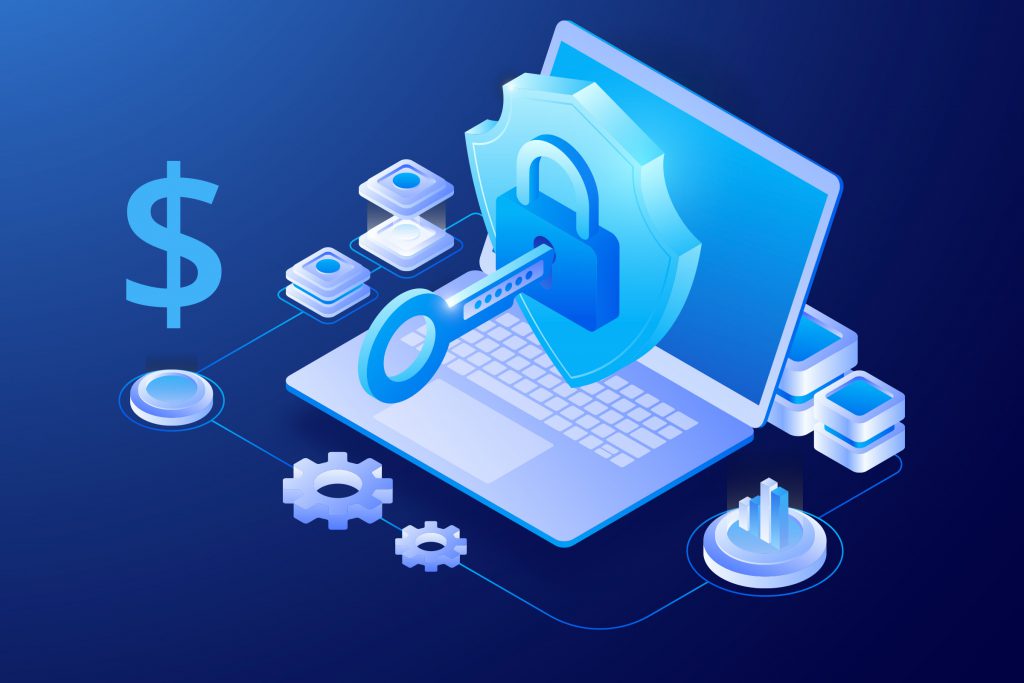In today’s business environment, it’s no longer true that hackers only target large companies. Every industry—from utilities, healthcare, and education to small business—has been a victim of cyberattacks. Not only are the attacks happening more frequently, but they are also getting destructive and expensive.
An IBM Cost of Data Breach Report found that data breaches in 2021, on average, cost businesses more than those that happened in the last seventeen years. The report also indicated that compromised credentials were the leading cause of breaches.
To combat this alarming trend, many companies turned to cybersecurity consultants and invested in automation and artificial intelligence security. On average, these forward-thinking organizations saved $3.81 million. Using zero-trust systems also reduced data breach costs by approximately $1.76 million.
Identifying how much you need to invest in cybersecurity depends on the size of your business, your workforce, and the exact needs of your security package. This will also help define what you want your security system to achieve and how much cybersecurity will cost, so you can develop a budget with these costs in mind.
It’s not unusual for an organization to set aside 0.2% to 0.9% of its income for cybersecurity. Kaspersky, a cybersecurity and anti-virus provider, estimates that an on-premise cybersecurity setup usually costs a business about $54,300. This amount includes hardware, software, and professional services.
Set Cybersecurity Goals
Each company has a different set of cybersecurity objectives. Your company’s needs will influence your budget. Before nailing down the variables, consider the function you want your security stack to provide.
Reasonable cybersecurity goals should include protection from directed attacks, compliance with mandated regulations, meeting third-party security requirements, being eligible for government contracts, and protection against third-party vendor vulnerabilities.
Consider Organization Size
Large companies store more data than smaller companies. More importantly, they have more employees, which can be a huge liability because human error accounts for 95% of cybersecurity breaches and they rarely originate from IT departments. More employees mean more computers, devices, and workstations that need to be protected from cyberattacks aimed directly at employees. For this reason, large enterprises are a bigger target for cybercriminals than smaller organizations.
Know Your Data
State and federal regulations protect certain types of information. Your company must comply with relevant cybersecurity requirements if it processes or stores government-protected information. Examples include healthcare facilities subject to Health Insurance Portability and Accountability Act (HIPAA) requirements and companies that store credit card information that must abide by the Payment Card Industry (PCI) Security Standard.
The types of sensitive data you store may result in different requirements within the same bill. For instance, there are various regulations in the Federal Contract Information (FCI) and Controlled Unclassified Information (CUI) regulations which all fall under Cybersecurity Maturity Model Certification (CMMC).
Cybersecurity Tools and Solutions
The products and services you use can significantly impact spending on cybersecurity solutions. Effective cybersecurity solutions are the result of the efforts of trained and experienced professionals who know how to implement and manage highly specialized software.
Cybersecurity investments may only include software if an organization already has an in-house cybersecurity team on staff. Conversely, starting from scratch requires considerably more money if the company needs to hire staff or the services of a third-party security operations firm. The cost difference between in-house and professional installations can be a factor in your security decisions.
Professional Audits
In addition to the security benefits of protecting against cybersecurity attacks, you can use the cybersecurity stack to meet compliance requirements and schedule audits to prepare for an annual compliance review. Additionally, your cybersecurity provider can outline a plan to help your organization stay compliant with upcoming regulations.
Additional Services
As cyberattack threats increase across all industries, regulations are being put in place to protect businesses, government agencies, and citizens. Organizations preparing for a new certification may require additional services from cybersecurity vendors, such as readiness assessments and remediation plans.
Cybersecurity Is Here to Stay
Cybersecurity will soon be a standard component of every company’s budget. The cost of an effective cybersecurity program is money well spent when considering the peace of mind that comes with knowing your company is better protected.
However, even if a company invests heavily in strengthening its cybersecurity, there will never be a 100% guarantee that the measures will work all the time. The best plan is to deploy a multi-pronged, ongoing cybersecurity program that uses a combination of resources, training, and time to strengthen cybersecurity and reduce exposure in the event of an incident.
In Conclusion
There’s no one-size-fits-all cybersecurity solution with a single price tag. That said, cybersecurity is no longer an optional expense—it is a business necessity that should be an integral part of an organization’s budget. It is essential to note that the level of protection is not always a direct result of the amount of money spent. A good cybersecurity program doesn’t need to cost a fortune, but it does require prioritization and commitment by leadership, IT, and employees.
Organizations wondering how to improve cybersecurity should visit Guru to find the right freelance cybersecurity specialists for their business and its security needs.



